
Welcome to the fascinating world of Tufa rock, a geological wonder shaped by the intricate dance of calcium carbonate and the forces of nature. In this comprehensive guide, we will delve into the origins, composition, texture, and diverse uses of Tufa rock, providing you with a holistic understanding of this porous and intriguing formation.
Tufa rock, at its core, is a hollow and porous sedimentary rock resulting from the deposition of dissolved calcium carbonate in water, orchestrated by the collaborative efforts of plants, algae, and mosses. To refine our definition further, Tufa can be described as a product of calcium carbonate deposition occurring at temperatures close to ambient conditions. Microphytes, macrophytes, invertebrates, and bacteria often leave their imprints on this geological canvas.
The fundamental chemical formula for the formation of Tufa is:
Principally composed of calcite (calcium carbonate), Tufa may exhibit a yellowish or reddish hue due to impurities of iron oxides. Notably, calcrete, a pebbly form of Tufa, is porous and typically nonbedded, while travertine represents a denser and more banded manifestation of this geological marvel.
Group: SEDIMENTARY
Origin: Continental
Grain Size: Fine
Classification: Chemical
Fossils: Plants, Invertebrates
Grain Shape: Angular
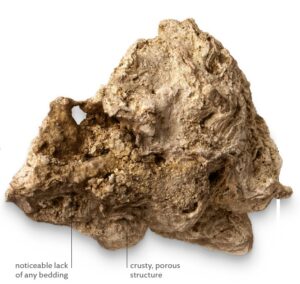
Tufa rock boasts a crystalline structure, often incorporating pebbles and sediment grains within its matrix. This unique texture contributes to the rock’s distinctive appearance and geological characteristics.
Tufa’s genesis occurs when calcium carbonate precipitates from lime-rich waters. This phenomenon takes place on cliffs, within caves, and on quarry faces, particularly in limestone-rich regions. Plants and mosses frequently become enveloped in Tufa, preserving them as crusty, lime-rich fossils. The preservation process is rapid, with modern organisms being encrusted in a matter of months under favorable conditions.
Tufa’s porous consistency makes it an ideal choice for planters. Its ability to retain moisture and support plant growth makes it a sought-after material in the realm of gardening, especially for alpine gardens.
Derived from Tufa, hypertufa is a concrete mixture with similar porous properties. This mixture finds applications in crafting garden containers, sculptures, and various artistic endeavors.
In the 4th century BC, Tufa played a pivotal role in Roman construction. Used to build walls up to 10 meters high and 3.5 meters thick, Tufa’s soft nature allowed for easy sculpting. Notably, Tufa masonry found its place in cemeteries, exemplified by the one in Cerveteri.
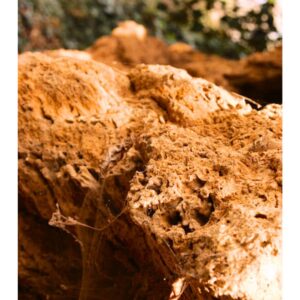
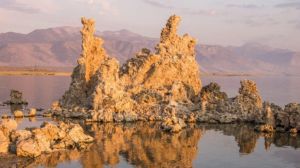
Explore the surreal landscape of Mono Lake, where Tufa towers rise like ancient sentinels from the alkaline waters. Witness the conscious collaboration between the lake’s chemistry and the microbial life, creating these majestic limestone structures. The Tufa towers of Mono Lake stand as silent witnesses to the delicate dance of nature and geology.
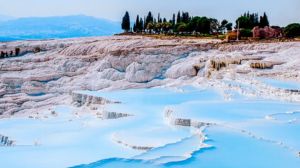
Immerse yourself in the otherworldly beauty of Pamukkale, known as the “Cotton Castle.” Marvel at the Tufa terraces, where warm mineral-rich waters cascade down the white slopes, creating a stunning display of crystalline formations. Pamukkale’s Tufa terraces beckon travelers to witness the conscious artistry of calcium carbonate deposition.
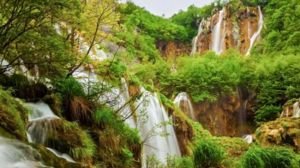
Journey through the lush landscapes of Plitvice Lakes National Park, where Tufa cascades adorn the emerald-hued lakes. The park’s conscious collaboration of water, flora, and Tufa rock creates a harmonious symphony of colors and textures. Plitvice Lakes stand as a conscious testament to the geological wonders shaped by the elements.
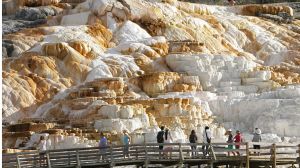
Witness the living sculptures of Tufa rock at Mammoth Hot Springs in Yellowstone. As hot springs release mineral-laden waters, Tufa formations evolve, consciously shaping the landscape. Explore the ever-changing canvas of Yellowstone’s Mammoth Hot Springs, where Tufa rocks play a central role in the ongoing geological narrative.

Experience the ethereal beauty of the Bonneville Salt Flats, where Tufa pinnacles rise from the expansive salt desert. These conscious formations emerge as calcium carbonate interacts with the unique salt composition of the flats. The Tufa pinnacles of Bonneville stand as silent sculptures, inviting contemplation of the Earth’s conscious geological creativity.
In conclusion, Tufa rock stands as a testament to the intricate interplay between geological processes and the living organisms that contribute to its formation. From its porous texture to historical significance, Tufa continues to captivate geologists, gardeners, and history enthusiasts alike. As we explore the depths of Tufa’s geological narrative, we gain a profound appreciation for the marvels that nature, over time, unfurls before us.
| Cookie | Duration | Description |
|---|---|---|
| cookielawinfo-checkbox-analytics | 11 months | This cookie is set by GDPR Cookie Consent plugin. The cookie is used to store the user consent for the cookies in the category "Analytics". |
| cookielawinfo-checkbox-functional | 11 months | The cookie is set by GDPR cookie consent to record the user consent for the cookies in the category "Functional". |
| cookielawinfo-checkbox-necessary | 11 months | This cookie is set by GDPR Cookie Consent plugin. The cookies is used to store the user consent for the cookies in the category "Necessary". |
| cookielawinfo-checkbox-others | 11 months | This cookie is set by GDPR Cookie Consent plugin. The cookie is used to store the user consent for the cookies in the category "Other. |
| cookielawinfo-checkbox-performance | 11 months | This cookie is set by GDPR Cookie Consent plugin. The cookie is used to store the user consent for the cookies in the category "Performance". |
| viewed_cookie_policy | 11 months | The cookie is set by the GDPR Cookie Consent plugin and is used to store whether or not user has consented to the use of cookies. It does not store any personal data. |